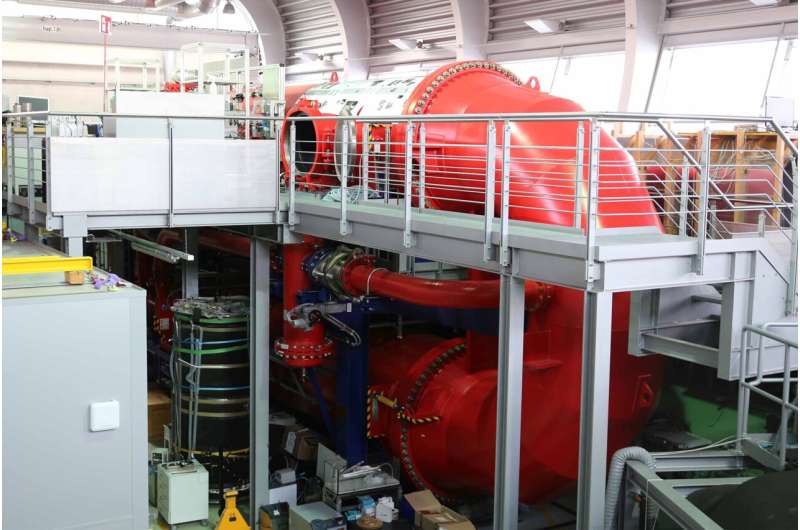This article has been reviewed according to Science X's editorial process and policies. Editors have highlighted the following attributes while ensuring the content's credibility:
fact-checked
peer-reviewed publication
trusted source
proofread
80-year-old principles incompletely explain turbulent flows, study shows

Experiments at the unique wind tunnel of the Max Planck Institute for Dynamics and Self-Organization (MPI-DS) in Göttingen show that laws formulated more than 80 years ago and their extensions only incompletely explain turbulent flows.
Stirring a cup of coffee creates a turbulent flow with large and very small vortices. The vortices of different sizes influence each other by transferring energy from a larger vortex to a smaller one, down to the smallest vortex, which dissipates in the liquid due to friction.
This concept was first described by mathematician Andrei Kolmogorov, who established general scaling laws for turbulent flows in 1941. Using these and further refinements, computer simulations for engineered flows, weather forecasts and climate models are still created from empirical data today.
"We found that these scaling laws seem to apply only to strongly idealized flows," reports Christian Küchler, first author of the study. Previously, it had been assumed that they were universally valid. Even before that, measurements in wind tunnels at lower turbulence levels could not confirm the theoretical predictions, but they were usually attributed to the turbulence strength being too low.
"In our unique channel, we can use gases at high pressures and thus achieve extremely high degrees of turbulence," says MPI-DS director Eberhard Bodenschatz, who designed the channel for his research.
By selectively generating turbulence and using an active grid, developed at MPI-DS by co-author Greg Bewley from Cornell University, the researchers were able to show that systematic deviations from Kolmogorov's predictions occur even in the strongest turbulence. This implies that medium-sized eddies in real flows are not completely decoupled from the very large eddies in a system by energy transfer, as has been suspected since 1941. Moreover, these new results are universal and do not depend on the strength of turbulence in the channel. The study is published in the journal Physical Review Letters.
"Our wind tunnel allows measurements that would otherwise not be possible," says Eberhard Bodenschatz, director at MPI-DS, explaining the special feature of the research facility. "We can better understand how turbulent flows really behave and develop new models on this basis," he continues.
For instance, these experiments can contribute to a better understanding of turbulence in engineered flows or the atmosphere. There, the effect of turbulence is one of the largest uncertainty factors in modern climate models and weather forecasting.
More information: Christian Küchler et al, Universal Velocity Statistics in Decaying Turbulence, Physical Review Letters (2023). DOI: 10.1103/PhysRevLett.131.024001
Journal information: Physical Review Letters
Provided by Max Planck Society





















